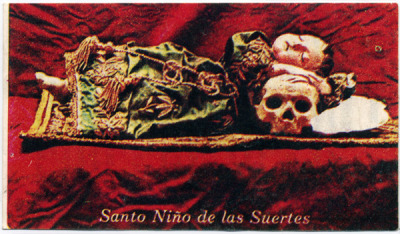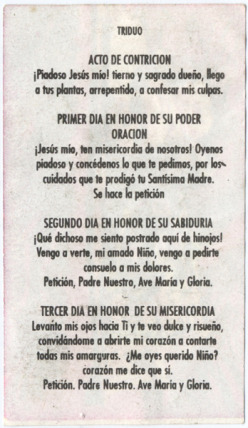(This entry is reposted from my old blog, Decorporation Notes - September 7th, 2009.)
I’m afraid that in the admirable quest for a subject of cinematic criticism, we’ve settled instead on a suitable subject for the criticism of mass spectacle.
The conspicuous success and consumption of Tarantino’s media events is certainly worth discussing, but to do so in terms of cinematic intent is like discussing the acting technique of a ventriloquist’s dummy: Tarantino has succeeded in pantomiming meaning with enough unconsciousness to suspend the audience’s and critic’s disbelief long enough for them to believe they are watching a film — but so, for that matter, did WALL-E. If we actually believe a single frame of Tarantino to be intentional, where, then, were the moral debates over his use of Samurai history in Kill Bill? The attention drawn to the very difficult lives of real undercover law enforcement agents following the release of Reservoir Dogs?
 The impersonation of cinemaWhat better way to attract critical attention that to convincingly pantomime the film genre that is ostensibly concerned with the greatest moral problems of humanity? In terms of cinema, I believe the equation in Inglourious Basterds is boringly simple: Tarantino has merely shifted his aspirations in the decidedly horizontal spectrum of establishment positions — and he is celebrated winkingly for his un-self-conscious ability to regurgitate formulas of dialog, plot, camera movement and montage, and, of course, his complete lack of any compunction towards the deepest cynicisms of his age
The impersonation of cinemaWhat better way to attract critical attention that to convincingly pantomime the film genre that is ostensibly concerned with the greatest moral problems of humanity? In terms of cinema, I believe the equation in Inglourious Basterds is boringly simple: Tarantino has merely shifted his aspirations in the decidedly horizontal spectrum of establishment positions — and he is celebrated winkingly for his un-self-conscious ability to regurgitate formulas of dialog, plot, camera movement and montage, and, of course, his complete lack of any compunction towards the deepest cynicisms of his age
It is fascile to analyze the events of the funding, production, distribution, marketing and mass viewing of this strip of celluloid without bringing to bear the economic and social mechanisms that allow for such things to happen, and which profit by them. And in this regard, to single out this film for critique on the basis of it’s historical content is to believe that the filmmakers, actors, cinematographers, art directors et cetera actually meant “Nazi” when they uttered the word, made the costume, or wrote the press release. The so-called “inversion” or “rewriting” of history in the plot might be worth discussing if the filmmakers were intending or even capable of referencing reality instead of titilating themselves and the audience with their willingness to destroy understanding and meaning through their reflexive reflexivity. Reviewers may wish to discuss the “fantasy” of Jewish people taking revenge on living Nazis — going along, as it were, with the joke: the Nazis and Jews being pantomimed here could be replaced with any aggressors and victims of historical incident, granted that the history is still politically or emotionally charged enough to illicit post-ironic glee in its dismissal as a purely rhetorical device.
The real fantasy, I feel the need to quip, is the idea of audiences encountering a film in the cinema that actually deals with the moral, ethical, political or emotional problematics of the Jewish (or any other) genocide and its representation. Of course, such fantastic films are very real, just not commonly given value or representation in the mass media. In avoiding the discussion of such films, I can only conclude that reviewers are skirting the much more complex matter (not reducible to upturned thumbs or a star-based quantification scheme) of why and how certain objects of mass spectacle arise, are given pseudo-critical attention, and praised with faint damnation.
Therefore (surely you saw this coming) the most glaring oversight in any discussion of Inglourious Basterds is the figure of Jean-Luc Godard, recognized as the filmmaker most preoccupied with the holocaust — presumably because to enter into the complex cinematic significance of the Histoire(s) or In Praise of Love would be to remove the irresistible shininess of the glare of mass spectacle from this slight, pathetic and barely-willed piece of fake-blood-strewn shit Tarantino has most recently withered from his hyperactive anus. I shivered as I saw once again, the words “A BAND APART” appear at the beginning of Basterds, and was reminded of the quote by Godard, “Tarantino named his production company after one of my films. He would have done better to give me some money.”
Here are some more fantasies: perhaps the budget of Basterds should have gone towards the American broadcast or distribution of the Histoire(s). The thesis of Godard’s Histoire(s), it has been many times said, is that the history of film, and in some extension, mass media, has been forever changed by it’s failure to show the atrocities of the camps while they were operating. I am tempted to give Tarantino the credit of reinvigorating this failure for a generation who is already ignorant of it’s historical antecedents (filmic and moral) — but again, I would still be participating in the pantomime. The primary moral dilemmas on display in the theater on the night I saw Basterds concerned the valuation of art in America.
Pop formalism being the order of the day — fascinating critics and mass audiences alike — we can all masochistically applaud the death of film culture presented to us in the beige, recycled composites of the International New Waves via the American “Mavericks” (There Will Be Blood, No Country for Old Men) or the callous (and sometimes bigoted) reduction of social allegory to an easily subvertible, vapid genre technique (Slumdog Millionaire, District 9). In this climate, I see very little to be remarked upon in Basterds as a film, or Tarantino as a filmmaker — the “self-reflexivity” and “genre-blending” he utilizes is as remarkable as his use of color film or sound. Why, however, we believe that it is to be considered a film at all — a discrete object of culture — is worth discussing. And in that discussion, perhaps his faint damnation of war criminals could be adequately reviled.
 Saturday, March 13, 2010 at 2:25AM
Saturday, March 13, 2010 at 2:25AM 




















